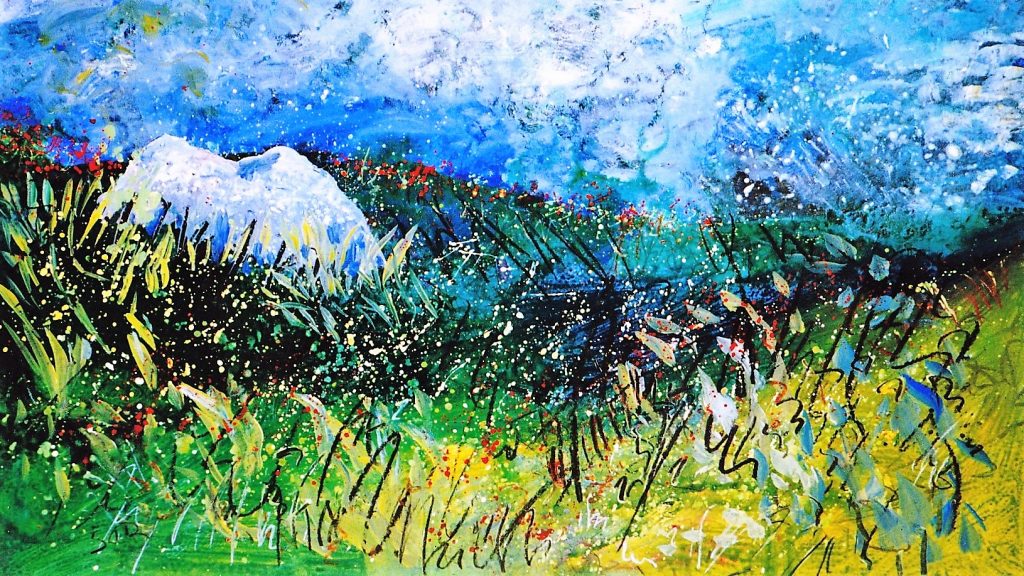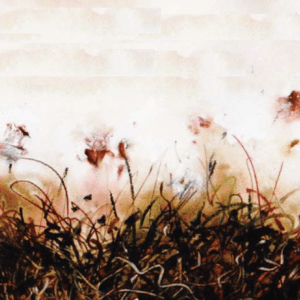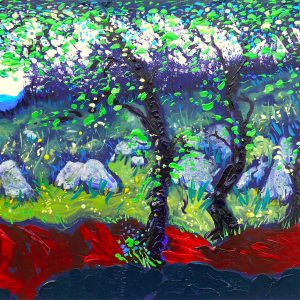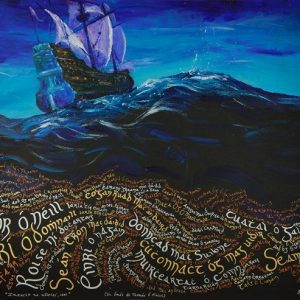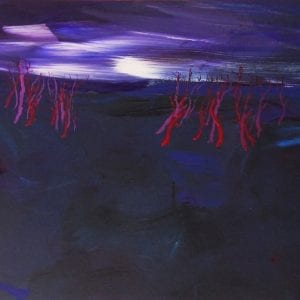Description
Ó Dochartaigh took a body of work to Germany, France & Holland in 1994, following on from his successful “Oíche go Maidin” show in the Duke Gallery of Dublin. It went under various titles but the song themes (“… beautiful lines describing simple, diminutive, colourful aspects of wild and rugged Donegal”) continued to interest him. A small show in the Kilcock Art Gallery of Co. Kildare called “Maidin” (Morning) was finishing up just before travelling to the continent. It was a selection from this show of paintings that formed the bases of the 25 works he took with him. All 25 had been sold when he returned to Ireland.
As a singer of Gaelic songs – from the living sean-nós tradition – Ó Dochartaigh has found easy access into a landscape peculiar to the Gaeltacht. The songs of the Gaeltacht, he discovered, are full of beautiful lines describing simple, diminutive, colourful aspects of a wild and rugged terrain washed by the waves of the sea, dewy with streams, lakes and waterfalls and overgrown with heather, fern and gorse. In these songs, only the minuscule aspects of the surroundings are celebrated – the blossom of the blackthorn, the dew on the morning grass, berries growing along the hedgerows, etc. The largely anonymous poets and song-writers of the sean-nós tradition – the people who actually made the songs – were, in Ó Dochartaigh’s view, visual artists of a kind. They knew this landscape intimately and they painted it lovingly with words and music rather than with brushes. Painting with brushes was, in the past at least, only the privilege of the wealthy; sean-nós, on the other hand, is the expression of the dispossessed and under-privileged. Ó Dochartaigh is really the first Irish painter to recognise this phenomenon and the first to make paintings based on sean-nós songs. His first major one-man show was a
